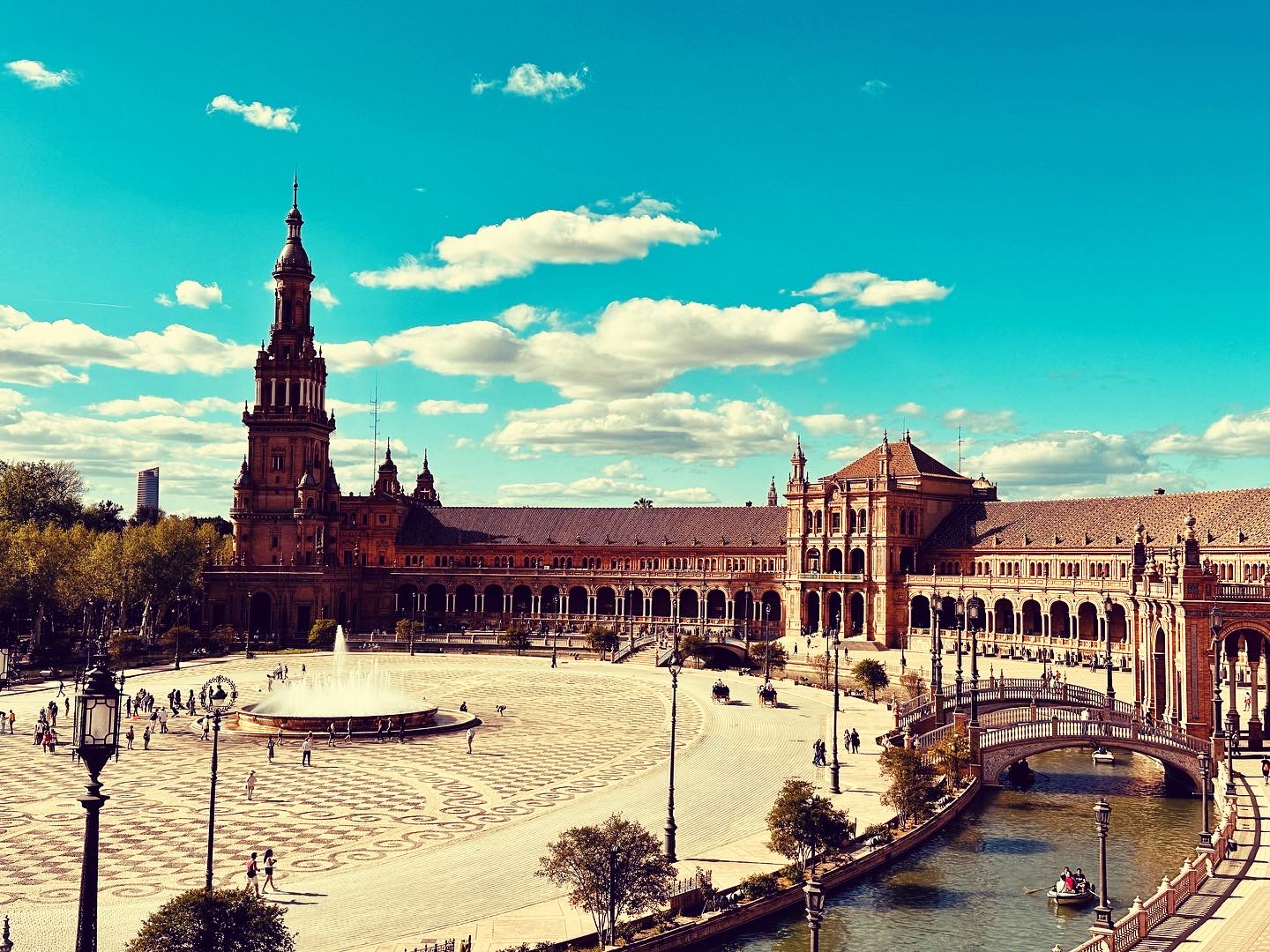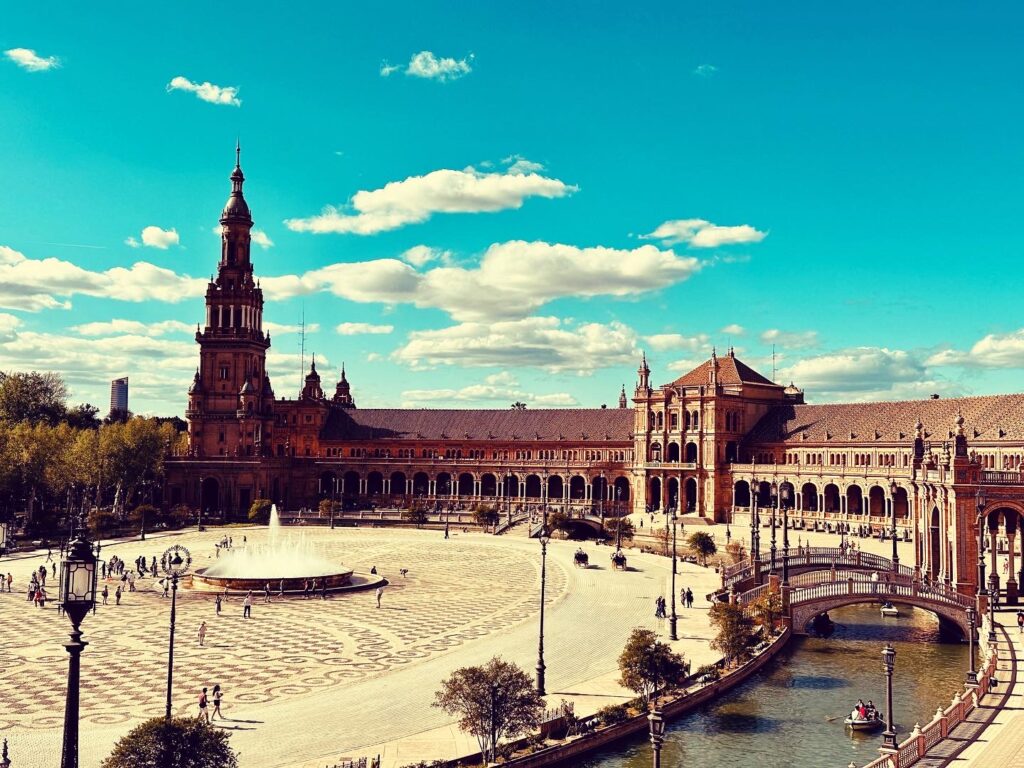
In early April in Seville, the heat is already bearing down. My feet are aching, and I feel like a misted hothouse flower. We are walking to the Plaza de Espana, a must-see in Seville. This city was once the seat of immense wealth, so we pass many gorgeous buildings as a testament to its illustrious history and walk down wide avenues lined by stately sycamores. With carriages carrying sweaty tourists trotting past, you can almost squint your eyes and imagine this as a bustling center of trade, a place to funnel wealth from the Spanish colonies hundreds of years ago.
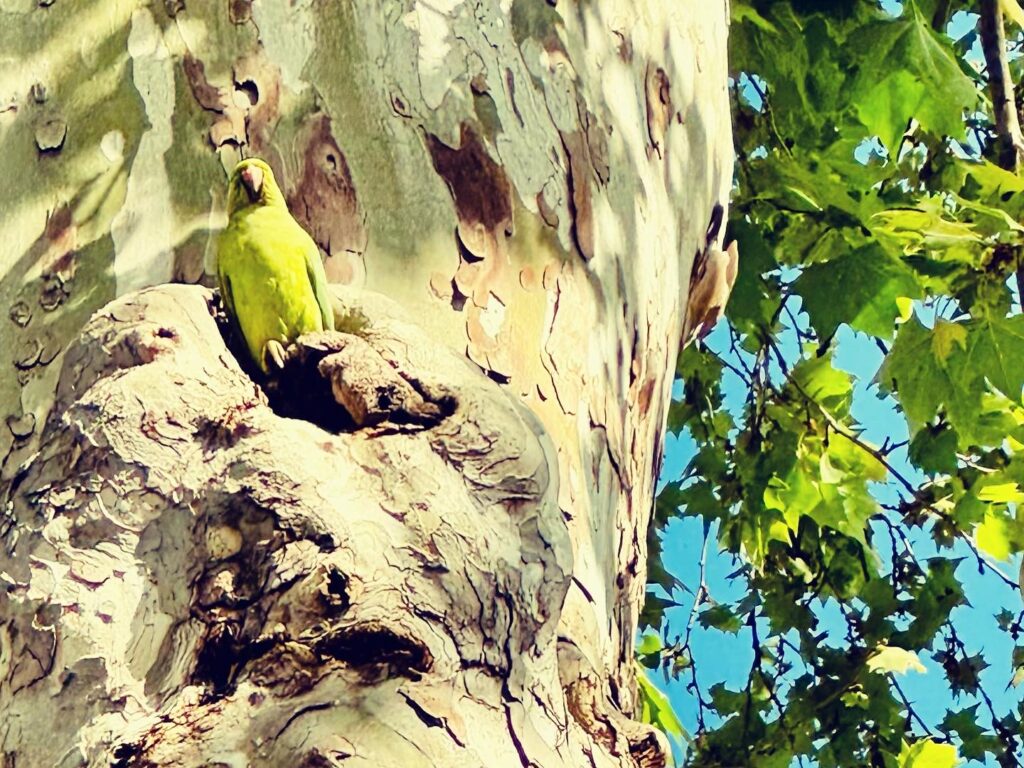
I see a flutter of green in a tree ahead, and then the bird emerges fully from a hole in the trunk.
“That’s a goddamn parrot!” I said. “A fucking parrot!”
When things excite me, courteous language is insufficient to express my enthusiasm. Seeing parrots drift from tree to tree or fly ahead of us was, in many ways, the highlight of my day. I assumed the bird was indigenous to the area, but a quick Google search revealed they were an invasive species from the 1970s, released pets imported from South America. These tiny parrots were edging out other birds and causing problems due to their noise and weighty nests.
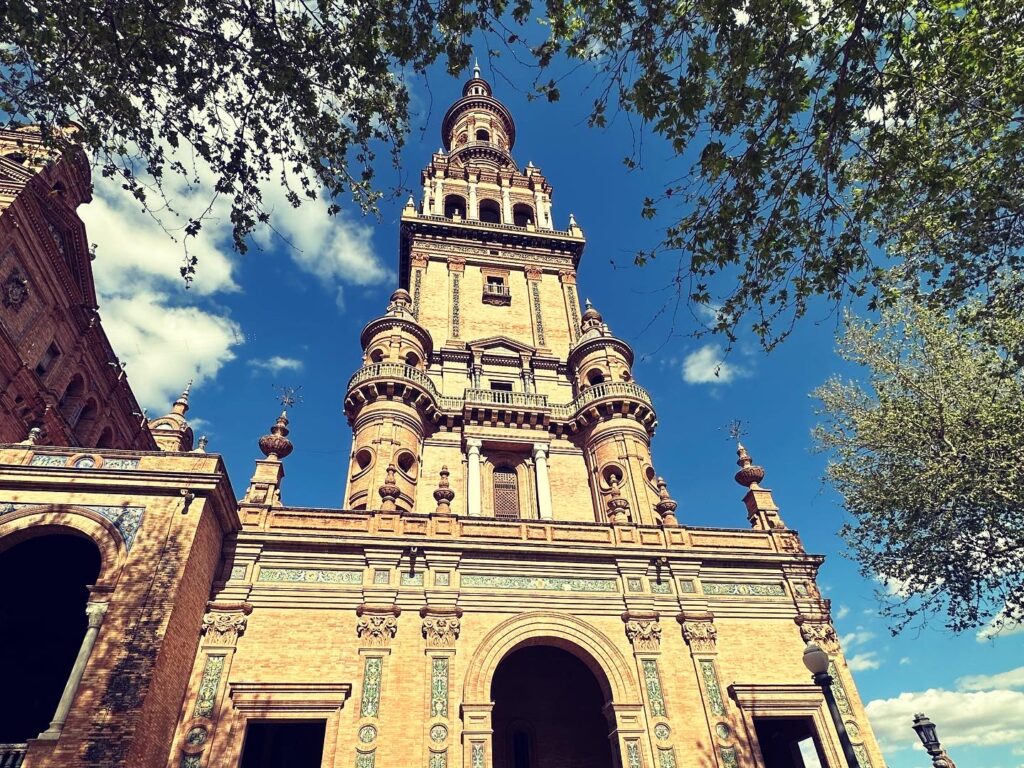
When we entered the Parque de Maria Luisa, a public expanse of greenery along the Guadalquivir River, it was a welcome relief to get into the shade. A short walk from our entrance was the Plaza de Espana. This vast opening within the park was surrounded by a half-moon of stunning buildings, a broad, shaded walkway hugging everything, and the open arms of it all inviting you to the large fountain in the center. A fake river circled through with people waiting their turn to take a lap in a rowboat. The effect of it all is enchanting.
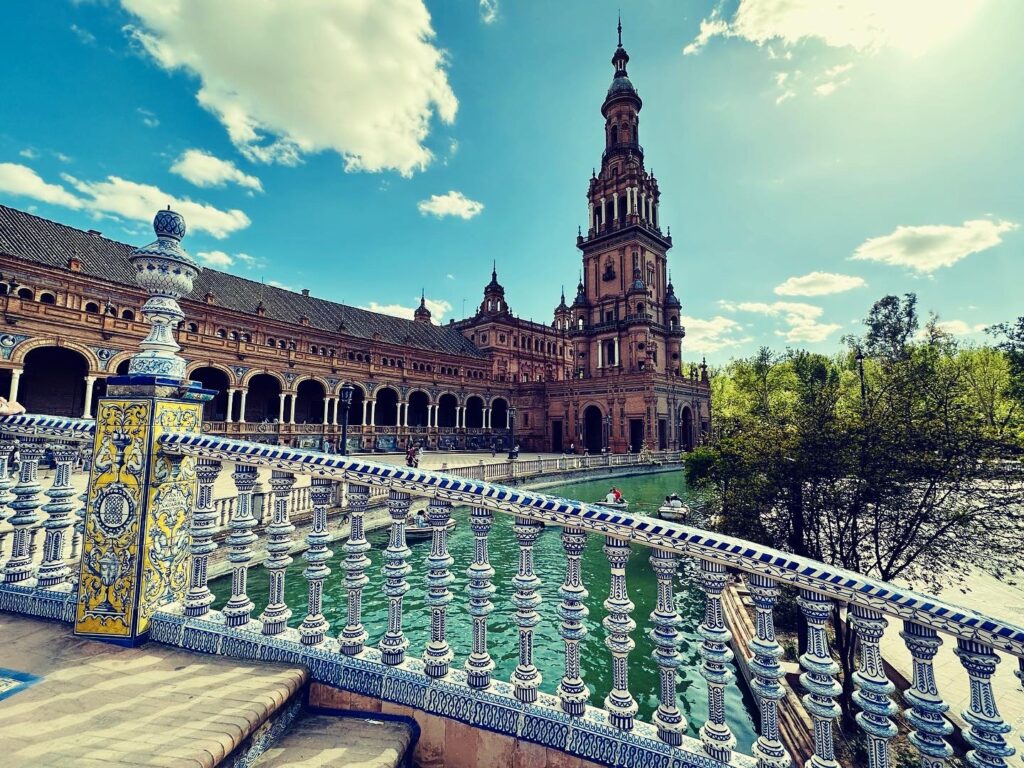
The architecture is so unique and influenced by many time periods and places that it has been used repeatedly in films from Lawrence of Arabia to Star Wars II: Attack of the Clones.
Like Barcelona’s Gothic Quarter, this beautiful place and the influences it reflects – Baroque, Moorish, etc. – are the result of the city and country wanting to go all flashy for a big fair, the Ibero-American Exposition of 1929. Strolling around the grounds, you hear the distant click-clack of castanets and the strumming of a guitar playing a sad Spanish song. Flamenco dancers regularly perform here, and we stopped briefly to see them dance. Very briefly.
I looked at their beautiful faces, the languid movements and lack of emotion, and kept walking.
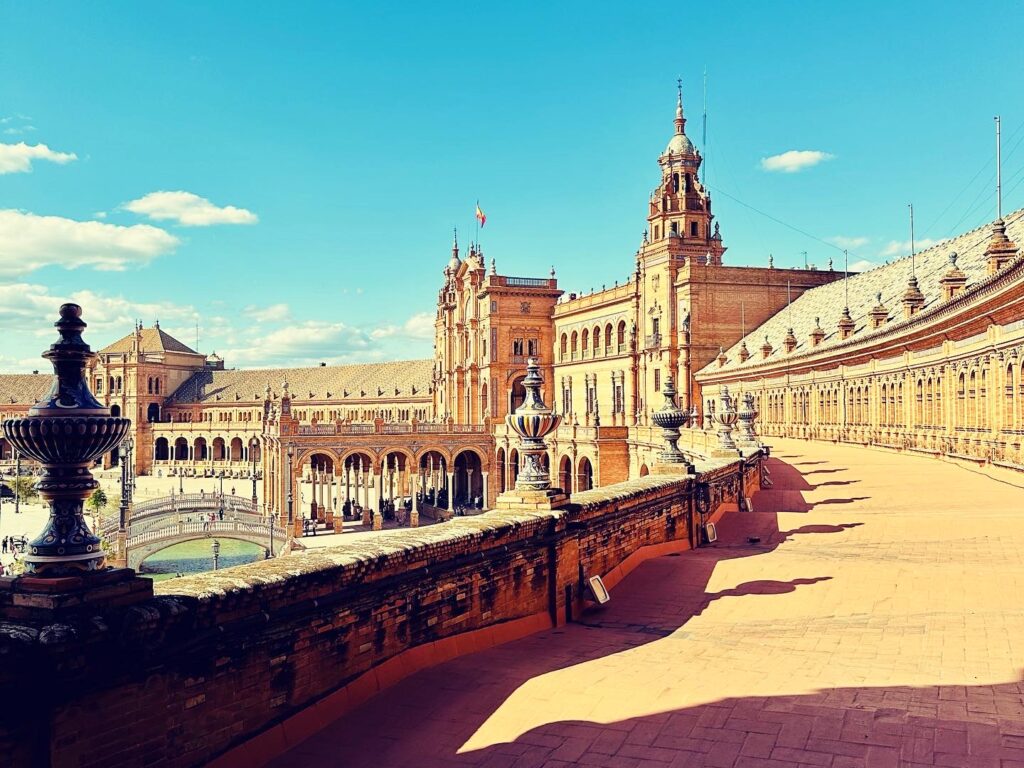
“These dancers ain’t got shit on the ones we saw in Cadiz,” I said to my husband, quiet enough for no one to overhear.
We walked around the plaza, viewing the individually tiled benches set back in the walls to represent each region in Spain. The tiles are gorgeous, covering banisters and benches and depicting scenes and products from each region in rich colors with unifying hues of royal blue accented by swirling yellows. We briefly considered waiting for a rowboat but put the thought out of our mind when a child, also wanting a boat, began to wail. We could understand his disappointment because the wait was too long. We decided to walk through the park to the river, stopping briefly for something cool to drink.
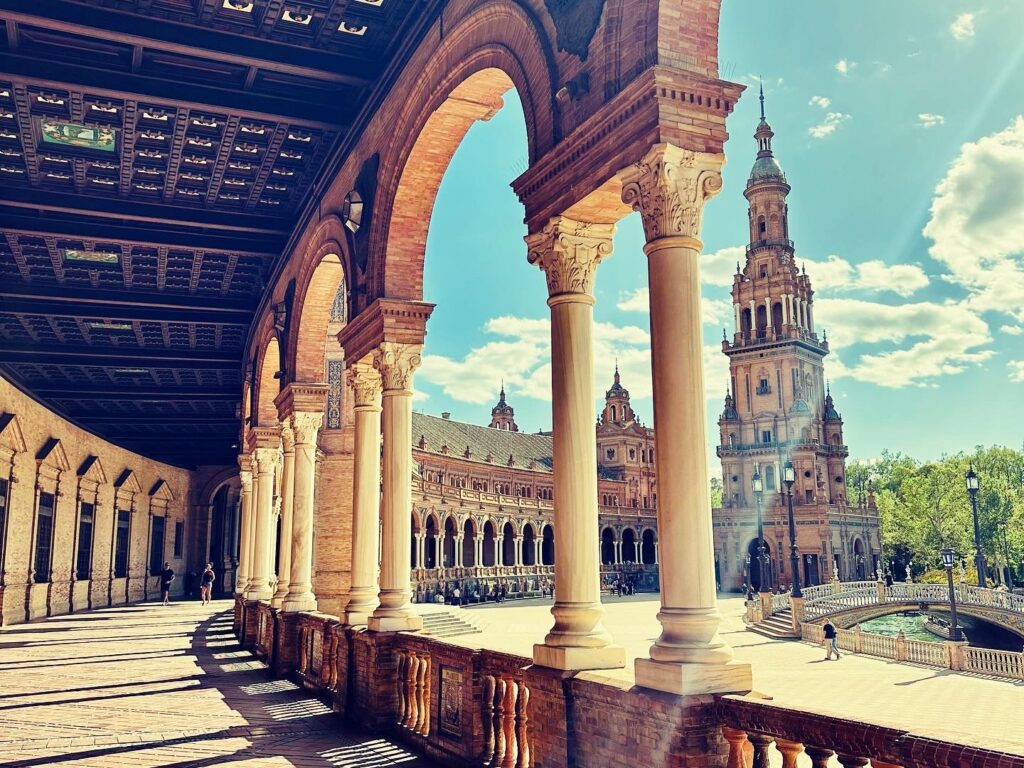
A version of me from when I was a teenager still exists in the way I imagine a place. This version places me, the traveler, in any locale as a partier. Woohoo! Up for drinking and eating anything all day like I did as a 17-year-old scarfing down bratwurst and knocking out chilled shots of vodka by the monkeys in the Berlin Zoo simply because I could. I don’t know why I still see this person in my travel visions. The real, current version of me, on a long hot walk in Seville, does not want to chug sangria; I wanted to chug a Coke Zero with a water chaser.
We walk along the river briefly and cross a bridge.
I had considered scheduling a kayak while in town, but from where we stand on the bridge, the water looks murky, and the banks are too high to see anything as appealing as you could on foot. Across the river are more places to eat and get a cool drink on a hot day. We walk up toward Triana, a popular area for good tapas (so we read), but the day is getting longer and hotter. I am exhausted and fussy, for lack of a better word, when I don’t know the direction or timeline of our journey. Meandering is usually more appealing to me, but with the added heat and distance, I will discover the extra exhaustion I feel is part of long COVID. My lungs have new scarring that is still healing, even though I had a mild case. On our return home, a CT scan will alarm a pulmonologist enough for a biopsy meaning the cancelation of the rest of our summer trips. I didn’t know this was what was happening with my body at that moment, so I just assumed I was fussy. I felt floppy, like I should be carried on a litter everywhere, but my sore feet and joints had already taken me through miles and miles of Seville streets.
We saw a cluster of stray cats behind a locked gate of someplace that looks like an abandoned school. They regard us sleepily from the shade. My husband wanted to walk more, but he saw me struggling and said, “Let’s go home and nap.” Home is always wherever I am sleeping at the moment where my toothbrush can be found. We don’t see any more parrots on our walk back. I don’t know if I could muster the same excitement as I could earlier in the day. Still, I kept searching the trees for the remainder of our stay, hoping to catch a glimpse of their bright green feathers.
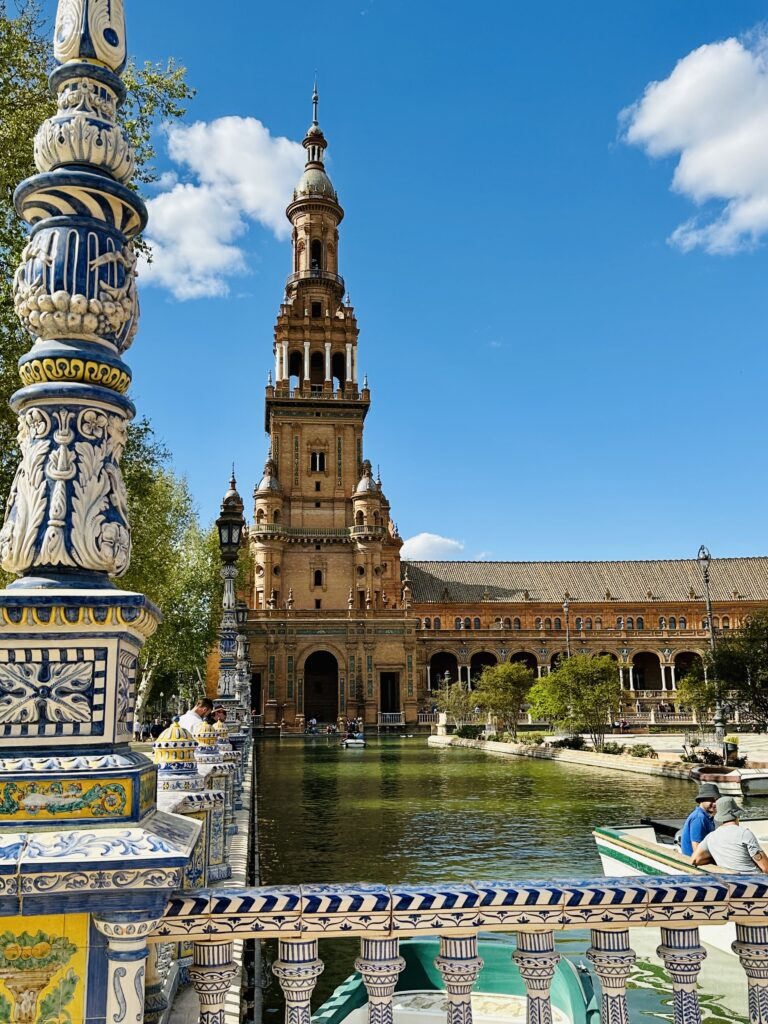
General Tips:
- I’ve said this in another post, but unless you love extreme heat, avoid going to Seville in the summer. Even in early April, it was heating up.
- Watch for the parrots, also known as the Monk Parakeet.
- Take the time to take a rowboat. We did not, and now I look at my photos of happy people in the boats with the same dissatisfaction as the child we heard wailing that day.
